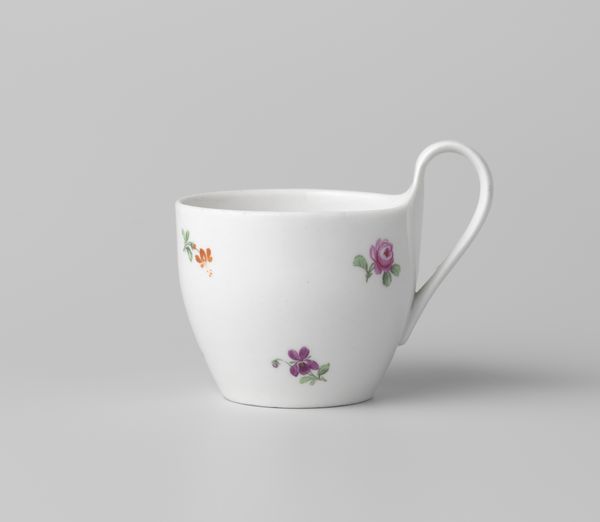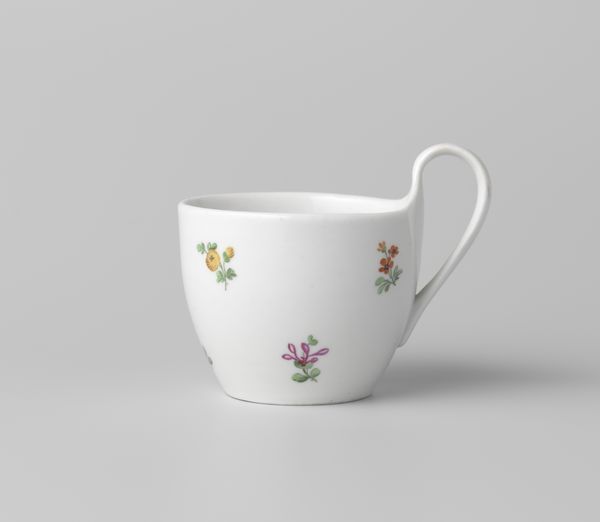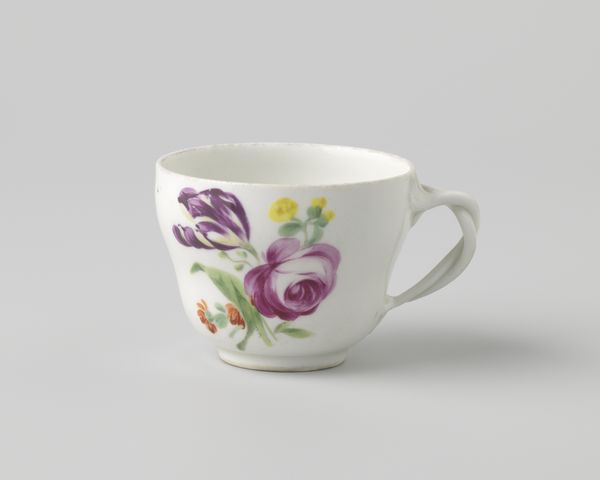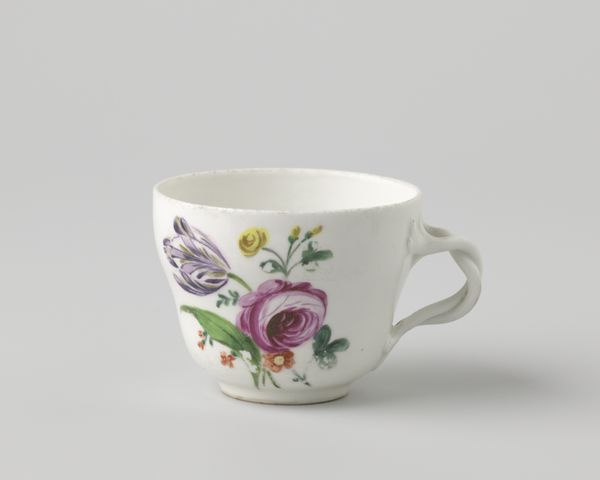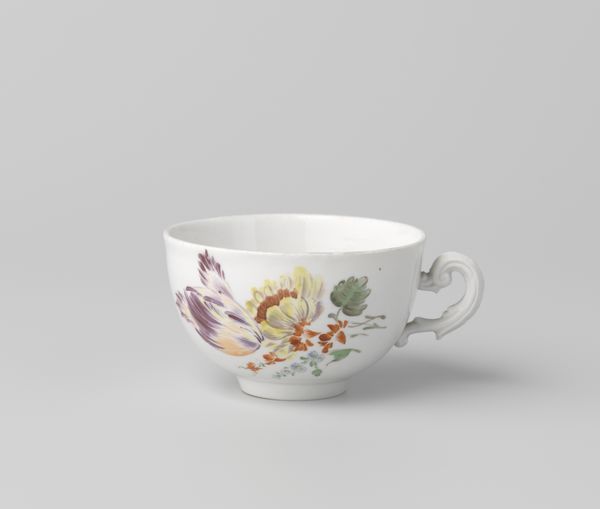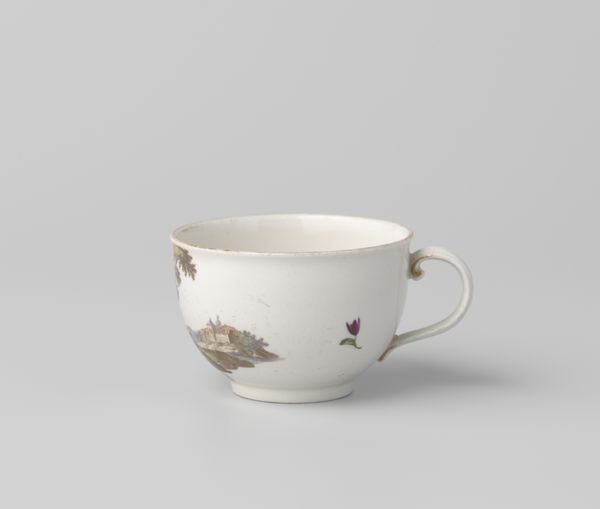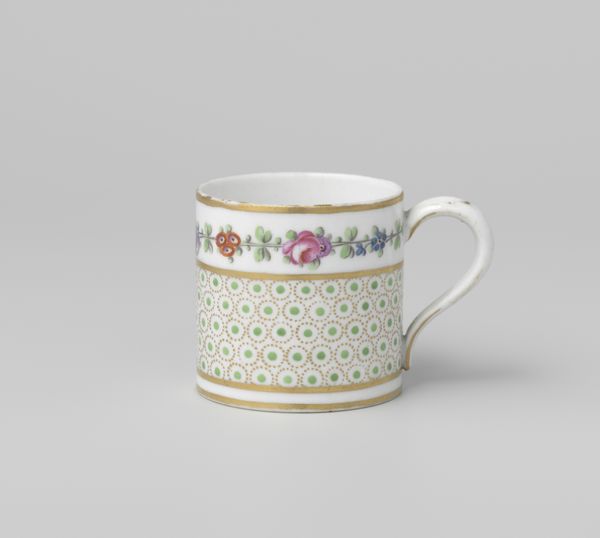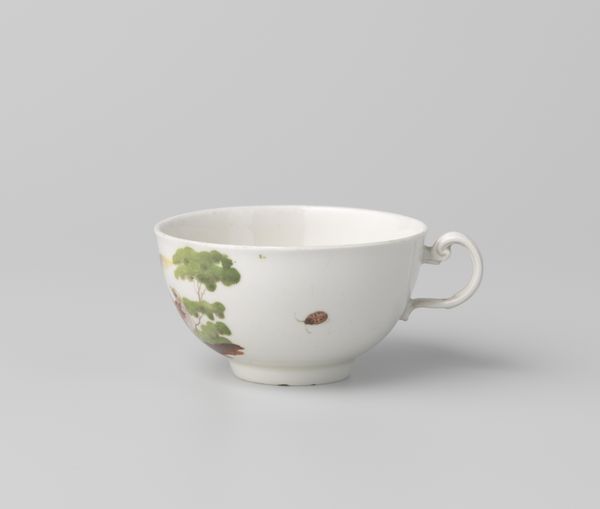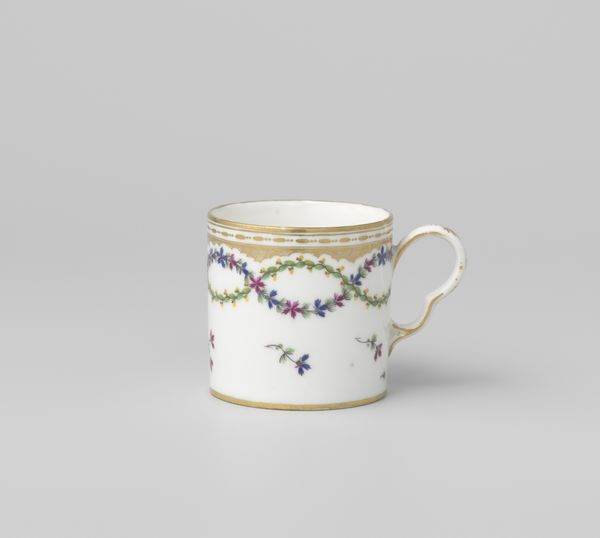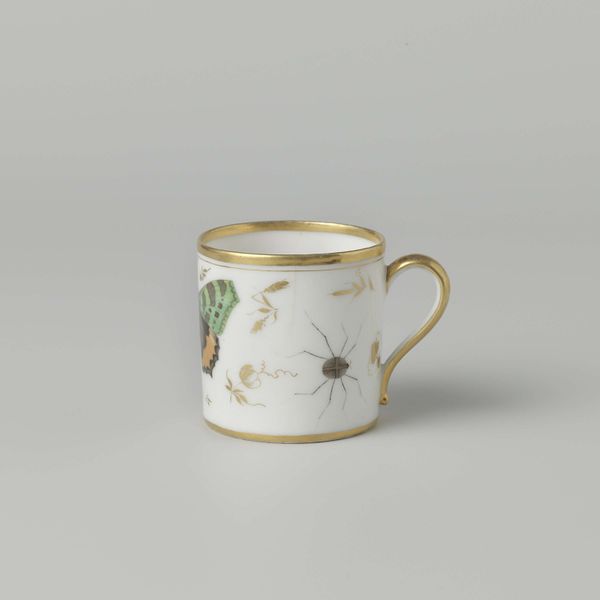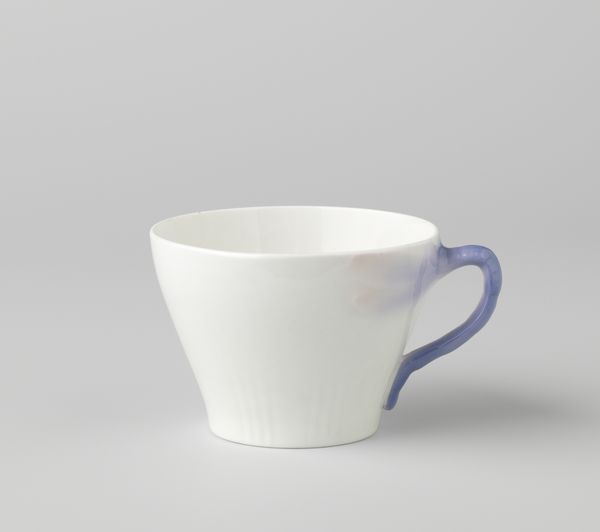
porcelain
#
product photograph merchandise
#
product studio photography
#
product shot
#
retro 'vintage design
#
porcelain
#
food illustration
#
plain flat background
#
product mock up
#
watercolour bleed
#
watercolour illustration
#
decorative-art
#
pale flat background
Dimensions: height 7.7 cm, diameter 7.3 cm, diameter 4.4 cm, width 9.4 cm
Copyright: Rijks Museum: Open Domain
Editor: So this is “Cup with flowers,” made of porcelain sometime between 1849 and 1870 by the Königliche Porzellan Manufaktur. It's currently at the Rijksmuseum. It's such a simple, elegant piece; the delicate flowers scattered on the stark white porcelain create a sense of understated luxury. What are your initial thoughts on its historical context? Curator: Well, this cup exists within a complex network of power and privilege. Porcelain itself was once a highly coveted material, a symbol of wealth and colonial trade. How do these dainty flowers, seemingly innocent, speak to the larger economic systems that made such an object possible? Editor: That’s a great point! I hadn't really considered that the cup might represent more than just simple beauty. It’s decorated with very small floral designs of different colours, spaced sparsely across the body. Could you elaborate on its symbolism? Curator: Absolutely. Think about the controlled nature of the floral decoration. This wasn’t folk art. These were manufactured objects designed for a specific clientele. The flowers might represent a romantic idealization of nature, carefully curated and devoid of the messiness and labor of the actual natural world. Do you think that sanitised vision reflects certain societal values or anxieties of the time? Editor: It does! It’s like they wanted to bring nature into their homes, but in a way that was completely controlled and pristine. Now I’m wondering what this says about people's relationships with labour and nature during that period. Thanks for shedding some light on all the layers embedded within what seems to be an innocuous cup! Curator: Precisely! It highlights how even seemingly decorative objects can be read as cultural documents, revealing broader societal attitudes. And, as a bonus, it can stimulate engaging discussions. Editor: Indeed. I’ll definitely look at porcelain differently going forward.
Comments
No comments
Be the first to comment and join the conversation on the ultimate creative platform.
